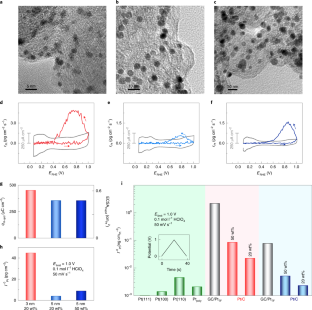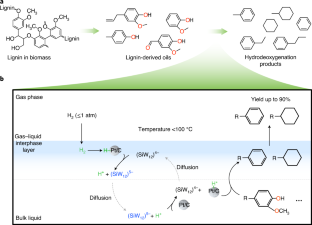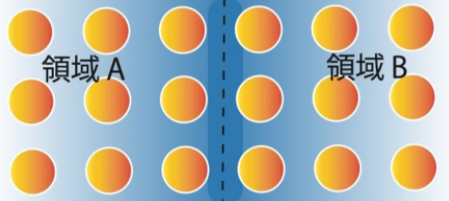(High-precision electrochemistry: The new gold standard in fuel cell catalyst development)
2020/9/10 アメリカ合衆国・アルゴンヌ国立研究所(ANL)

・ ANL を始めとする国際研究チームが、新アプローチを通じて燃料電池のカソード触媒の白金溶解プロセスを原子・分子レベルで調査し、燃料電池車の市場展開の実現に寄与する対策を報告。
・ PEMFCs(固体高分子形燃料電池)では、アノード電極での水素による酸化反応(HOR)およびカソード電極での空気による酸素還元反応(ORR)を通じた発電でモーターに電力を供給し、副生物として水を排出する。
・ 高コストの白金粒子は、ORR を含む燃料電池での反応を促進する最も効果的な材料であるが、特にカソード側で緩やかに劣化し、触媒性能の制限や燃料電池の寿命低減の原因となっている。
・ 今回、表面特化ツール、電気化学的手法、誘導結合プラズマ質量分析、コンピューターモデリングや、原子間力顕微鏡、走査型トンネル顕微鏡、高分解能透過型電子顕微鏡を駆使した新アプローチにより、白金の単結晶表面、薄膜およびナノ粒子での溶解を基本構造のレベルで調査した。
・ その結果、カソード電極での ORR 中の白金溶解のメカニズムを突き止め、溶解を阻止する金を利用したナノ触媒設計を提案。高精度合成アプローチにより、精密な物理・化学特性を有する構造を作製し、2D 表面の調査で解明した構造と安定性の関連性が 3D ナノ粒子にも適応することを確証。
・ 白金ナノ粒子の安定性を金使用の有無で比較し、ナノ粒子コアへの金の配置が、高安定性を付与する最適な表面構造へと白金配列を促進することを確認。また、溶解の起こり易い部位を保護するよう選択的に金を積層した。ORR を効果的に引き起こす部位にて白金原子の付着を維持することで、本研究で使用した最も微細なナノ粒子からの白金溶解をも回避した。
・ さらに、予測的エージングアルゴリズムの開発により、白金ナノ粒子の長期的な耐久性を評価し、金を使用しないナノ粒子に比して耐久性が 30 倍向上したことを確認。
・ 本研究チームは、ジョンズ・ホプキンズ大学、ベオグラード大学(セルビア)、ウィスコンシン大学マディソン校、同志社大学、ドレクセル大学およびオークリッジ国立研究所より構成される。
・ 本研究は、米国エネルギー省(DOE)の科学部、基礎エネルギー科学局の材料科学・エンジニアリング部門おおびエネルギー効率・再生可能エネルギー部(EERE)の Hydrogen and Fuel Cell Technolgies Office が支援した。
URL: https://www.anl.gov/article/highprecision-electrochemistry-the-new-gold-standard-in-fuelcell-catalyst-development
<NEDO海外技術情報より>
(関連情報)
Nature Materials 掲載論文(アブストラクトのみ:全文は有料)
Eliminating dissolution of platinum-based electrocatalysts at the atomic scale
URL: https://www.nature.com/articles/s41563-020-0735-3
Abstract
A remaining challenge for the deployment of proton-exchange membrane fuel cells is the limited durability of platinum (Pt) nanoscale materials that operate at high voltages during the cathodic oxygen reduction reaction. In this work, atomic-scale insight into well-defined single-crystalline, thin-film and nanoscale surfaces exposed Pt dissolution trends that governed the design and synthesis of durable materials. A newly defined metric, intrinsic dissolution, is essential to understanding the correlation between the measured Pt loss, surface structure, size and ratio of Pt nanoparticles in a carbon (C) support. It was found that the utilization of a gold (Au) underlayer promotes ordering of Pt surface atoms towards a (111) structure, whereas Au on the surface selectively protects low-coordinated Pt sites. This mitigation strategy was applied towards 3 nm Pt3Au/C nanoparticles and resulted in the elimination of Pt dissolution in the liquid electrolyte, which included a 30-fold durability improvement versus 3 nm Pt/C over an extended potential range up to 1.2 V.



